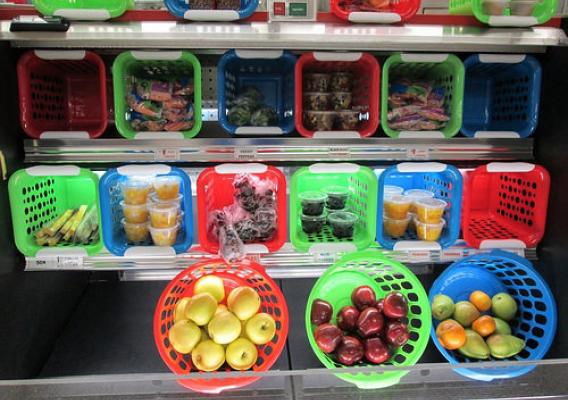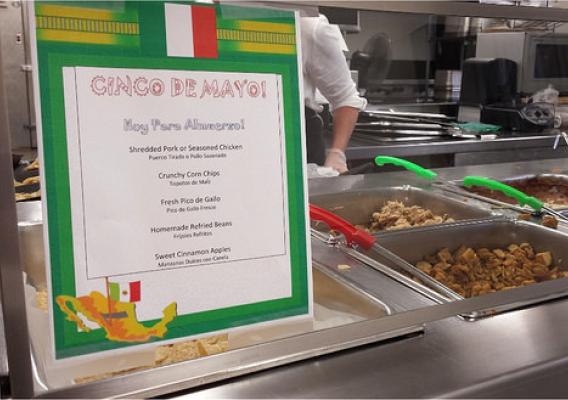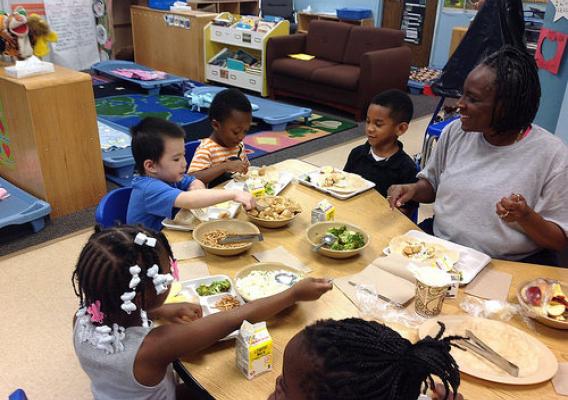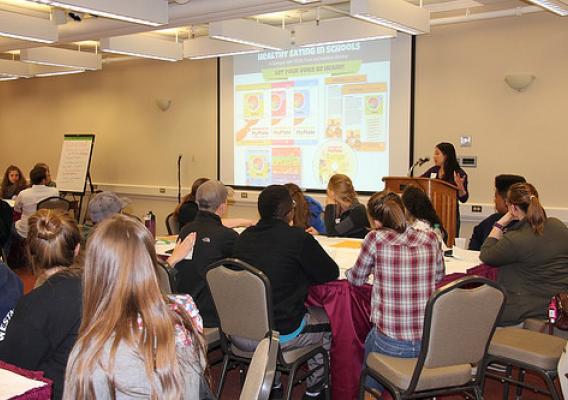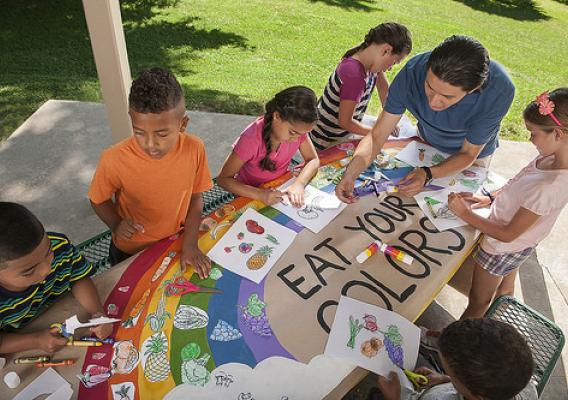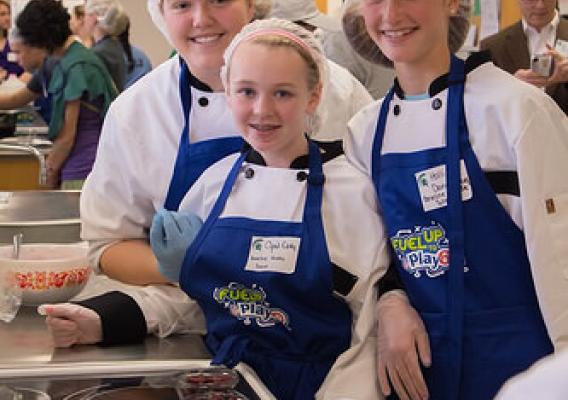Teenagers at several schools across the country are working together with school nutrition staff to make changes to the school cafeteria. Informed by Smarter Lunchrooms’ research, these students are promoting healthful foods to their peers and having a say in menu offerings. Team Nutrition Training Grants help fund a number of school activities that engage students in nutrition education and wellness activities. To learn more about Team Nutrition Training Grant activities, visit http://www.fns.usda.gov/tn/team-nutrition-training-grants.
The following guest blog describes how Iowa high school students worked with school nutrition staff to alter the way fruits and vegetables are offered in their school cafeteria. Following the changes, other students have taken notice of the new colorful displays, creative menu names, and signs promoting the salad bars. Reading their story, you’ll learn about innovative ways to engage youth in school wellness efforts.
By Carrie Scheidel, MPH, Team Nutrition Co-Director, Iowa Department of Education
As teachers prepared their classrooms for the new school year, school nutrition professionals and students in Iowa were working to make their lunchrooms smarter. A partnership between the University of Iowa Public Policy Center – College of Public Health, Iowa Department of Education, and five Iowa high schools worked to apply Smarter Lunchrooms’ techniques to make healthy choices easier at school.

